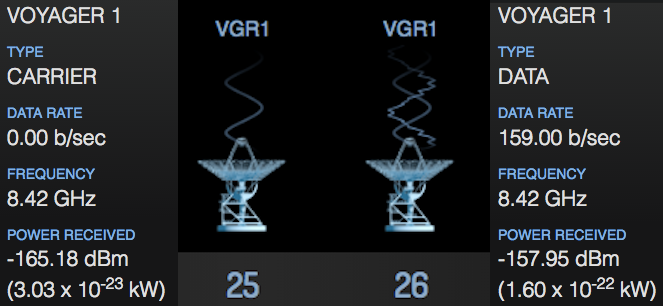I just looked at the Deep Space Network site DSN Now at https://eyes.nasa.gov/dsn/dsn.html and I saw that both dish numbers 25 and 26 are receiving a 8.42 GHz downlink signal from Voyager 1. Both dishes are 34 meters in diameter.
After watching for 20 more minutes, I can see that while both signal strengths drift by many dB, the CARRIER signal in number 25 always remains about 6dB weaker than the DATA signal in number 26.
Why does DSN sometimes uses two dishes at the same time to receive Voyager-1?
above: screen shot montage from NASA's DSN Now page at about 02:52 UTC, July 23, 2016.
